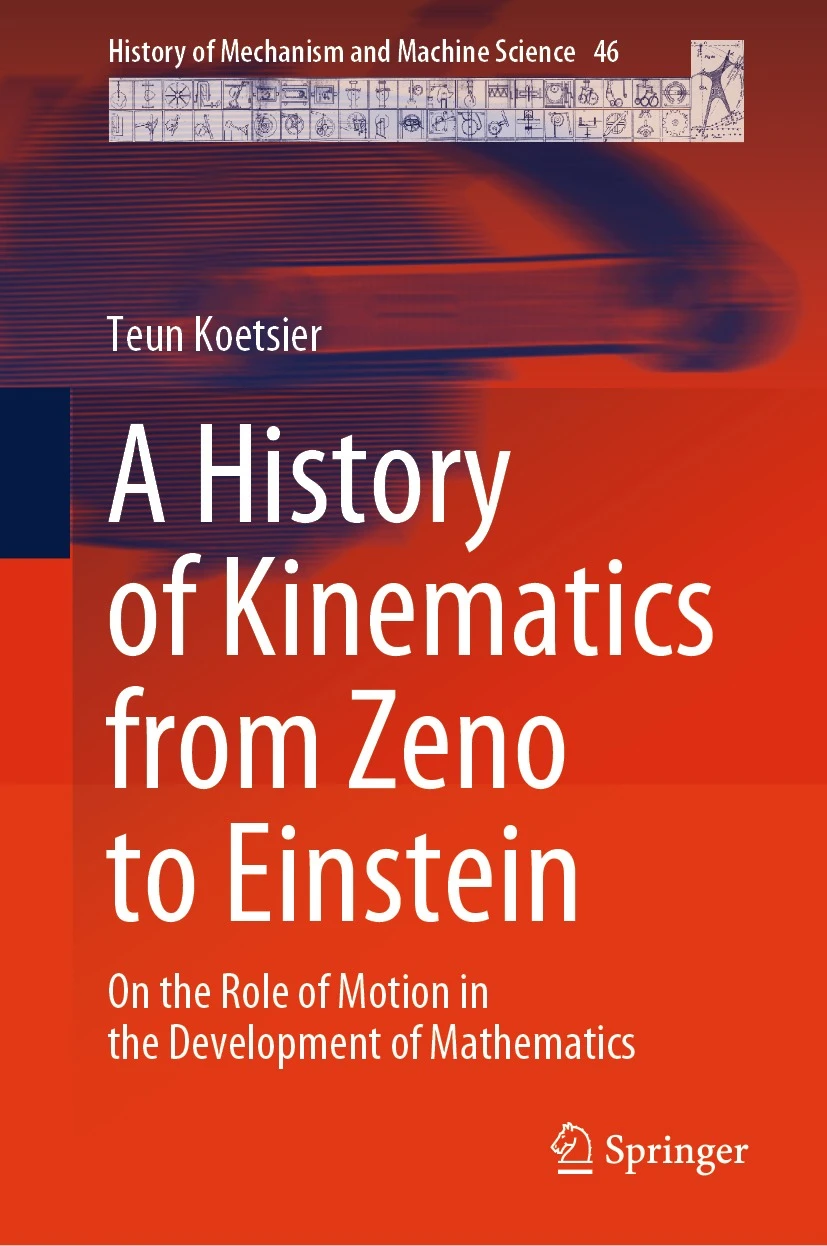
A History of Kinematics from Zeno to Einstein by Teun Koetsier
Teun Koetsier, A History of Kinematics from Zeno to Einstein, On the role of motion in the development of mathematics, Springer Science Publishers, 2024
The word kinematics was introduced in the 19th century by the French physicist Ampère. For him, it was a sub-discipline of mechanics in which movement is studied independently of forces and masses.
The movements studied in kinematics are usually geometric structures consisting of collections of positions of, for example, a point or a line in a Euclidean plane or space. Such structures play an important role not only in mechanics but also in geometry and in the theory of machines.
In the first half of this book, the author shows that movement played a crucial role in the development of mathematics in Classical Antiquity and in the 17th century. This often concerned kinematic definitions of curves.
At first, the movement was only supportive, but gradually in the 17th and 18th centuries the movement itself became the subject of research. The author discusses in detail the developments that preceded Ampère. This led in the 19th century, on the one hand, to theoretical kinematics, in which the general properties of movement are considered, and, on the other hand, to kinematics of mechanisms, in which the properties of specific movements are investigated.
The 19th-century developments in the kinematics of mechanisms were greatly stimulated by mechanical engineering, which took off after the Industrial Revolution. A golden age dawned for kinematics. The developments in Germany, in which the work of Franz Reuleaux and Ludwig Burmester played a central role, receive a lot of attention in the book.
The book ends with Einstein’s special theory of relativity, which partly arose from the role that kinematics played in theoretical mechanics. The problems surrounding the movement of light challenged the traditional view of space and time. The book ends with an outline of the role that kinematics played in the 20th century, particularly in relation to mechanical engineering.
Prof. Teun Koetsier (Vrije Universiteit Amsterdam) is a historian and philosopher of mathematics with a specific interest in the history of machines. In 2019, he published ‘The Ascent of GIM, the Global Intelligent Machine, A History of Production and Information Machines’. GIM is the successor of the Internet of things. It is, in fact, a giant robotic machine that covers the globe. It is no science fiction. It exists and grows and gets smarter and smarter.
 Find your
Find your